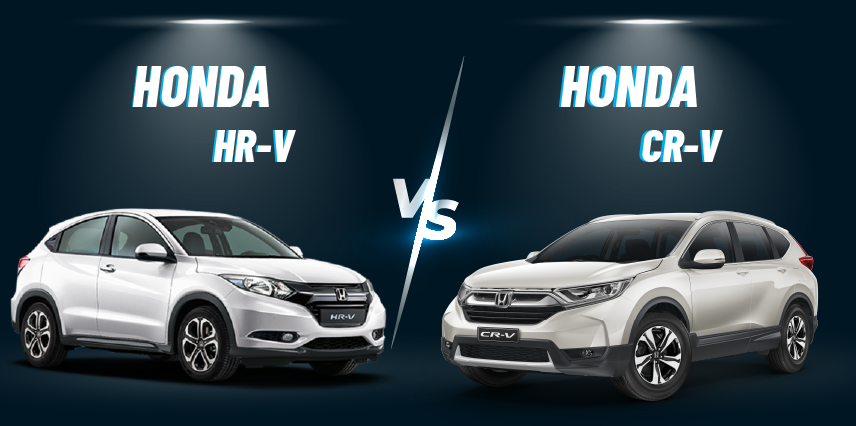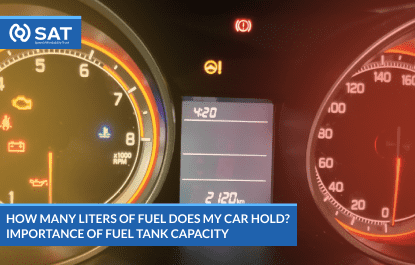
Bridgestone Vs. Michelin Tires – Who’s the Boss
Bridgestone and Michelin are the two industry giants of the tire market.

Honda is one of the leading car brands in today’s world. Honda has produced countless models of reliable cars that are loved by car fanatics globally. In this blog, we will do a car comparison between two of Honda’s hit vehicles, the Honda HR-V vs Honda CRV.
The first model of the Honda HR-V was launched in 1998. It has a total of three generations. Honda has made this model available globally, including continents such as Asia, Europe, and North America. The car’s features are discussed below.
The HR-V provides seating for five people. With a boot space of 590L, you can rest assured to have ample room to store your luggage and groceries. The HR-V has a total of six airbags as well as a child lock, so the safety of the passengers is not compromised. The vehicle also has an immobilizer feature to prevent theft. The car also comes with a CD and DVD player, so passengers can put on whatever they want during their journey.
Next, we have features that improve the comfortability of the passengers. The HR-V comes with an air-conditioner, heater, and a defogger, so you can have the best journey regardless of the weather. Other convenience features include power steering, power windows, and a power door lock. These features allow the driver to control the windows and car locks with a push of a button. The power steering reduces the effort required by the driver to turn the steering wheel, improving the overall journey. The HR-V is also equipped with cruise control – this is handy when you are driving at a constant speed and want to take your foot off the pedal. Additional comfort features include a rear folding seat, cup holder, armrest, and interior lighting. The sunroof feature also adds to the class of this vehicle.
All in all, this vehicle is equipped with necessary and some additional interior features, so passengers can have an enjoyable journey.
The exterior features of the Honda HR-V are also worth considering. The vehicle’s dimensions are 4.57m * 1.82m * 1.68m. The car weighs 1480 kilograms. The HR-V has alloy wheels with a wheel size of 18 inches, so the car has a good grip on the road, and the braking process is not compromised. The car is also equipped with front fog lights, so you can drive safely regardless of the weather conditions.
The Honda HR-V has an engine that runs on petrol and lets drivers travel to faraway places. The vehicle is 2354 cc and provides a standard horsepower of 139 hp at 5800 RPM. The engine provides a maximum speed of 180 Km/h. The city mileage for this vehicle is 8 KM/L and highway mileage is 10 KM/L. The fuel capacity is 58 liters. Hence, this car has a high petrol consumption, an essential factor to consider before the purchase.
To find out more information about the Honda HR-V or other used Japanese vehicles, visit us at SAT Japan.
The Honda CR-V debuted in 1997 and has been a popular choice among car fanatics since then. In contrast to the Honda HR-V, the CR-V has a total of six generations. Currently, one of Honda’s best-selling vehicles, the HR-V, is available globally, including continents such as Asia, Europe, and North America. The car’s features are discussed below.
The HR-V has a seating capacity for five people, just like the CR-V. However, its boot space is 470L, which is less than the boot space of CR-V. The CR-V has a total of two airbags and a child lock. Like the HR-V, this vehicle also has an immobilizer feature to prevent theft. However, besides having a CD and DVD player like the HR-V, this car also has a USB and an auxiliary cable. This gives passengers more options to put what they want. The CR-V is also equipped with front and rear speakers, which the HR-V does not have.
Moving on to the comfort features, the CR-V comes with an air-conditioner, heater, and a defogger. Additionally, this vehicle also has a climate control feature. Through this feature, you just have to set the temperature you want inside, and the car does the rest for you to maintain it. Just like the HR-V, the CR-V also includes power steering, power windows, and a power door lock. These features give more control to the drivers, making their journey more relaxing. The CR-V also has a cruise control feature, so you can drive at a constant speed and take your foot off the pedal. Just like the HR-V, the CR-V also has an option of keyless entry. However, unlike the HR-V, this vehicle also has a rear camera, making it easier to get out of places that require difficult reverses. Other than these features, the CR-V includes a rear folding seat, cup holder, armrest, and interior lighting. However, like the HR-V, there is no sunroof.
Overall, this vehicle has valuable interior features, making it worth a purchase.
Overall, this vehicle has valuable interior features making it worth a purchase.
Now, let’s have a look at the exterior features of the Honda CR-V. The vehicle’s dimensions are 4.29m * 1.77m * 1.61m. The car weighs 1221 kilograms. Just like the HR-V, this car also has alloy wheels. However, the wheel size is 17 inches. This is still good enough to ensure the car has a good grip on the road and the braking process is safe. However, this car does not come with front fog lights, but the HR-V does.
The Honda CR-V has a fuel-efficient engine that runs on petrol, with a tank capacity of 40 L. The vehicle is 1497 cc and provides a standard horsepower of 118 hp at 6600 RPM. The top speed of the car is 180 Km/h, similar to the HR-V. However, we see a big difference when we compare the mileage of the HR-V with the CR-V. The city mileage for the CRV is 16 KM/L and highway mileage is 18 KM/L. This means that the CR-V is much more budget-friendly and can cover almost double the distance at the same cost when compared to the HR-V.
To find out more information about the Honda CR-V or other used Japanese vehicles, visit us at SAT Japan.
Overall, both of the cars discussed above have their own pros and cons. If you are someone who prefers size and space, then HR-V is the right choice. However, if you want a more economical car, then CRV should be your choice. Both cars have made massive sales for Honda and still remain to be customers’ favorites. We hope that Honda will add more features that are currently missing in the future generations of these cars.

Bridgestone and Michelin are the two industry giants of the tire market.

Considering the recent developments in the world order, oil prices have increased significantly over the last decade. During such times, being well-researched about your car fuel tank and its features can be extremely useful in cost-cutting. Knowing about your car’s fuel capacity may not seem too significant at face value, but such a basic factor […]

Subaru is widely known for being a highly reliable manufacturer of vehicles that are simultaneously safe and stylish. Because of Subaru Models‘ performance and reliability, these vehicles have a loyal fanbase that swears by them. However, there are some limitations with their boxer engine, and one of the faults in some Subaru vehicles is the […]